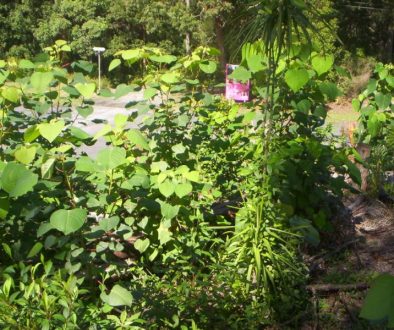Organic matter can save the humans

You can measure the viability of a society by looking at their soil. When archaeologists study extinct societies such as Easter Island, they have a rule of thumb – topsoil loss roughly equals environmental degradation, and environmental degradation roughly equals societal decline.
Organic matter is a dark, rather mysterious substance that is the essential ingredient in brown topsoil. Unlike subsoil, organic matter is chemically balanced, well drained yet moisture conserving, and is responsible for virtually all of the fertility in soil. Organic matter is created by dead plants, animals and micro organisms, laid down at the floor of forests and swamps. Depending on climate, a healthy forest creates topsoil at a net rate of about 1mm per hundred years.
Clear the forest, and the problems start – you are no longer producing topsoil and erosion outstrips soil formation. Rates of soil erosion in Australia are on average ten times and in some places thousands of times faster than sustainable levels. It’s pretty much the same around the world, the archaeologists’ story of Easter Island applied on a global scale.
Don’t believe me – go look for yourself. You could start at the Dorrigo Plateau, once covered in rainforest that produced a dark, rich topsoil – now completely removed across much of the plateau by bare soil cropping. The red subsoil now revealed is unusual as subsoil types go in that it can support a crop without topsoil. So the same farming (soil mining) practice continues, each year stripping away more subsoil, moving ever closer to the parent rock below.
A sad thing about soil organic matter loss is the vicious cycle that results. Loss of organic matter means loss of fertility. Loss of fertility means less ability to produce vegetation. Less vegetation means less organic matter and more erosion, and so on it goes. The longer the problem persists, the harder it is to recover.
So it’s not looking good for the human extinction problem, but they can be saved with just one policy: “Increase and conserve soil organic matter”. The good news is that the solutions require vegetation, and vegetation is cheap and low tech. More good news is that the one policy branches out into a hundred beneficial, sustainable actions.
In order to increase and conserve soil organic matter, we need well forested landscapes, which have at least one beneficial by product – biodiversity. Another great by product of well forested catchments is more consistent rainfall and soil moisture cycles, increasing average river flows. Waterways are a highly erosive environment. They need at least 50m wide good quality forest at each bank and wetlands near the outfalls. Do that to limit erosion and get as by product a healthy river system.
Trees would become the core unit in food production. A clue to how this would look is in the wet tropics, a fragile environment where soil can be completely destroyed only a few years after forest removal. In response, techniques of alley cropping and agroforestry are best developed there (some are thousands of years old).
My favourite technique is food forests. They are crops planted in a structure that imitates a forest – canopy, sub canopy, herbaceous layer, ground covers, vines, foraging animals, etc. but scaled down to a manageable size. Zaytuna farm at the Channon is a local subtropical example, and Mark Shepherd in the USA has a good temperate climate model.
Scaled down food forests are one of many techniques you can use to increase soil organic matter in your own garden and in so doing, give the humans a chance in their fight against extinction. We’ll talk about how in future articles.
(Article written in the Bellingen Courier Sun).



